The gardener is breeding hydrangeas cuttings in the fall using lignified cuttings. The first rule is to use seeds that have been grown for a long time at home inside a container or box. For propagation of hydrangea by cuttings, a large-leafed, tree-like and panicle hydrangea. The second rule - manipulation is carried out from late September to mid-October. The term is chosen so as to complete 4-5 days before the onset of frost.
Content
Positive and negative sides
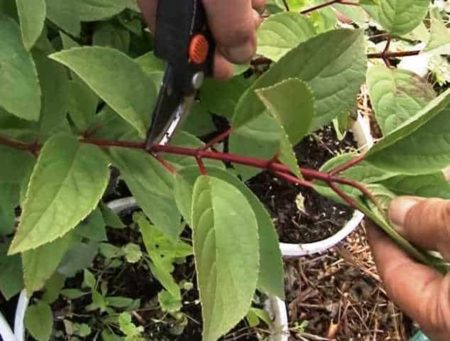
Before starting propagation of the plant by cuttings, the gardener analyzes the pros and cons.
| Positive | Negative |
| The branches that remain after trimming are used for a bonfire or as compost. | Seeds are kept indoors. Landing is carried out after the end of the cold weather. |
| The gardener has enough time to control the growth rate of seedlings. | It is possible to carry out cuttings of planted hydrangea in the fall in an exceptional case. The reason is the risk of a sudden cold weather. Before starting work, study the weather forecast. |
| By spring, the gardener will have healthy planting material. |
Hypersensitivity to cold is a nuance that the gardener always remembers.
Breeding methods
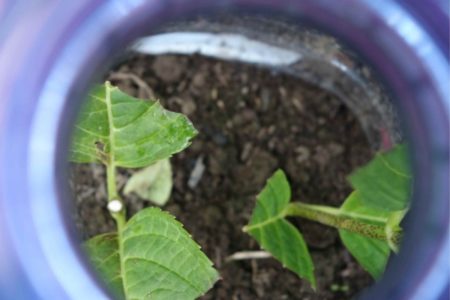
The use of cuttings is not the only option. Alternative technologies are used taking into account the climate and demanding varieties.
| Shoots | Bends | Bush division | Seeds |
| The least effective way. | Spend in spring or early fall. | Spend until the third decade of September. | It will require several times more time from the gardener. |
| Not always an effective procedure is carried out after the completion of flowering hydrangea. | Strong shoots are taken for manipulation. They should not have signs of illness. | Low germination. |
Stages of execution
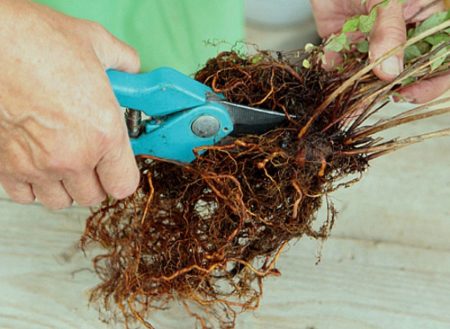
Correctly cut your own hydrangea does not require experience. For work, they take a healthy and not damaged stalk, the length of which is 10 cm.
Blanks for planting are cut in the morning. The more moisture there will be in the branches at the time of cutting, the better. The further procedure is as follows:
- it is forbidden to leave the stem without moisture - as soon as they are cut, they are immediately placed in a container with liquid;
- green branches are used for cutting - before you start, you need to make sure that they are not lignified;
- cutting begins with the lower and side shoots;
- the top is removed;
- chopped shoots are divided into several cuttings - each of them should have 3 pairs of leaves;
- slices always run obliquely;
- after the cutting is complete, the seed is sent to a container of water, into which 10-12 drops of any growth stimulator are added;
- the seed is placed in a container with water so that the leaves are not wet;
- a container with cuttings is sent to a dark place;
- it is forbidden to plant a plant in an open place - the less light, the better hydrangea feels.
Manipulations are carried out using a clean garden tool. After each use, it is disinfected.
Planting material
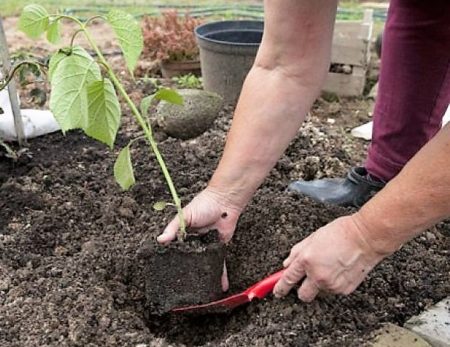
3 hours before planting, the upper section is lowered into molten paraffin. If it is not, then replace with wax. The second requirement is proper soil preparation.They take peat, which is mixed with sand in a ratio of 1 to 2. If it is impossible to find the listed components, they acquire soil for azaleas in the store. Further recommendations for the propagation of hydrangea at home are as follows:
- moisten the soil with a spray;
- cuttings are planted - the recommended depth is 3 cm;
- planting is carried out so that the upper leaves do not touch the soil;
- seed is covered with a bottle or a jar;
- the stalk is planted 7 cm further from the other;
- the soil is covered with a 2.5-cm layer of sand.
The intensity of irrigation depends on whether the gardener has covered the planting or not. If the answer is yes, then water is supplied at the beginning and end of the week. Do not remove cans during watering. The gardener who did not cover the seedlings is forced to spend more time on the mentioned procedure. They are watered from the sprayer in the morning and evening every day.
Rooting and further care
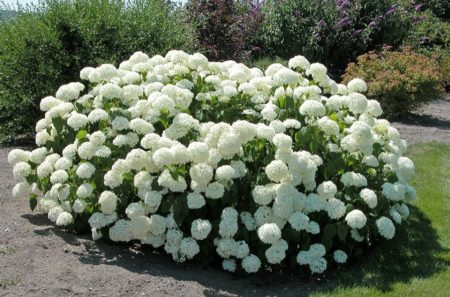 The process will take up to 30-40 days, depending on the variety selected. The first sign that hydrangea is rooted is the swelling of the kidneys and the appearance of leaves. It is forbidden to remove the jars (bottles) with which the cuttings are covered until both signs are noticeable. After removing the protective coating, seedlings provide regular watering. Spend it in the form of spraying twice a week. The task of the gardener is to constantly monitor the temperature. Critical is a jump from 5 degrees and above. If it happens, the seedlings will not last until spring.
The process will take up to 30-40 days, depending on the variety selected. The first sign that hydrangea is rooted is the swelling of the kidneys and the appearance of leaves. It is forbidden to remove the jars (bottles) with which the cuttings are covered until both signs are noticeable. After removing the protective coating, seedlings provide regular watering. Spend it in the form of spraying twice a week. The task of the gardener is to constantly monitor the temperature. Critical is a jump from 5 degrees and above. If it happens, the seedlings will not last until spring.
As soon as the weather outside the window became spring, the seedlings are planted in open ground. If the size of the garden allows, then the first 1-2 months, hydrangea is placed on a small area. Compact planting will show how viable the seed is. If there are no problems, then the seedlings are planted in a permanent place.
Seedling hardening
The stage on which the result depends. Hardening is carried out as follows:
- within 14 days, containers with seedlings are placed on the street;
- the duration of the daily “walk” is 10 minutes;
- every next day will add 5 minutes to the indicated figure.
If the plant survived the takeaway to fresh air, then it transplanted to a permanent place.
Varietal propagation features
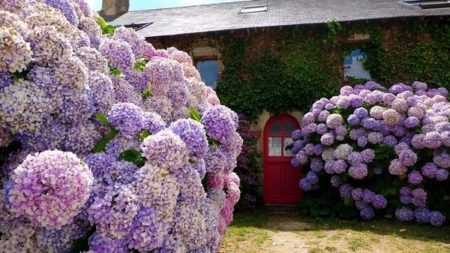
Each of the three types of hydrangea has a number of features. The more information a summer resident has about them, the better.
| Large leaf | Tree-like | Panicle |
| Use bush dividing technology. If the climate in the region is severe, then cuttings are used. | At first they dig a bush. | Punctuality is the key to success. Cuttings are carried out from mid-June to early August. |
| Manipulation is carried out from June to mid-September. | After a transplant, hydrangea may 1 season don't bloom. No need to worry. It is a natural reaction to interference with the root system. | The cuttings are taken from the bottom of the trunk. The absence of buds on it is a good sign. |
| After planting, seedlings are covered with a film. | ||
Feature propagation by cuttings in the fall - the seed is first sent to the pot. The plant spends winter at home. With the onset of stable heat, it is transplanted into the open ground. The key to success will be the protection of seeds from the vagaries of nature and regular watering. Its intensity is chosen taking into account the fact whether the seed is covered or not. Gardeners with experience recommend not to refuse to use plastic bags as a shelter.They have proven more effective than plastic bottles or cans.

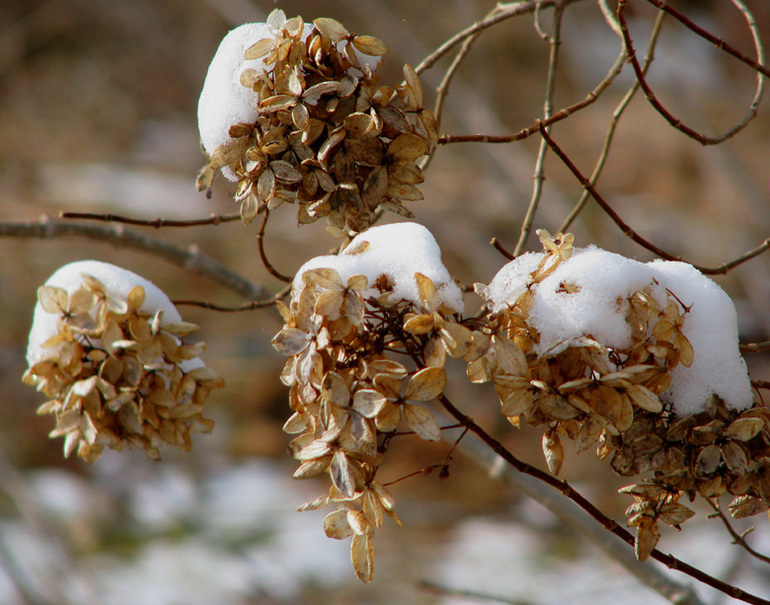
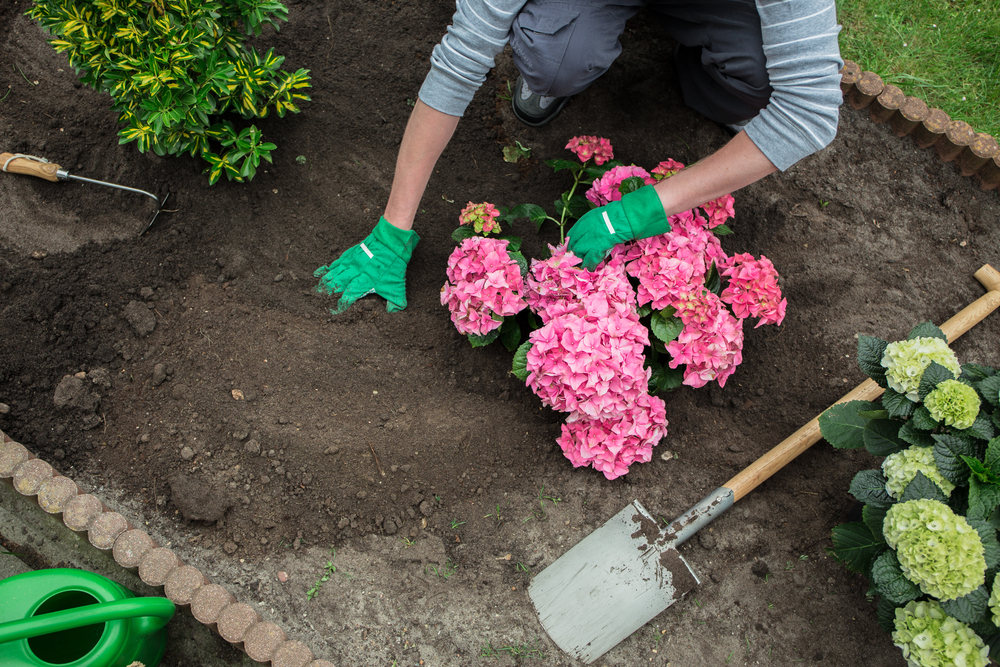

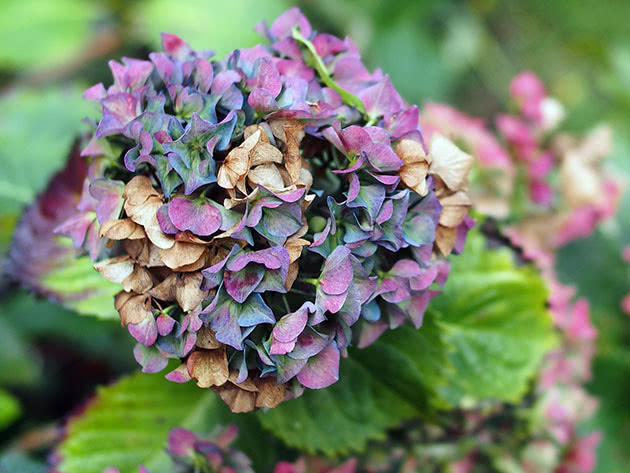 How to propagate hydrangea in the fall: methods, cuttings
How to propagate hydrangea in the fall: methods, cuttings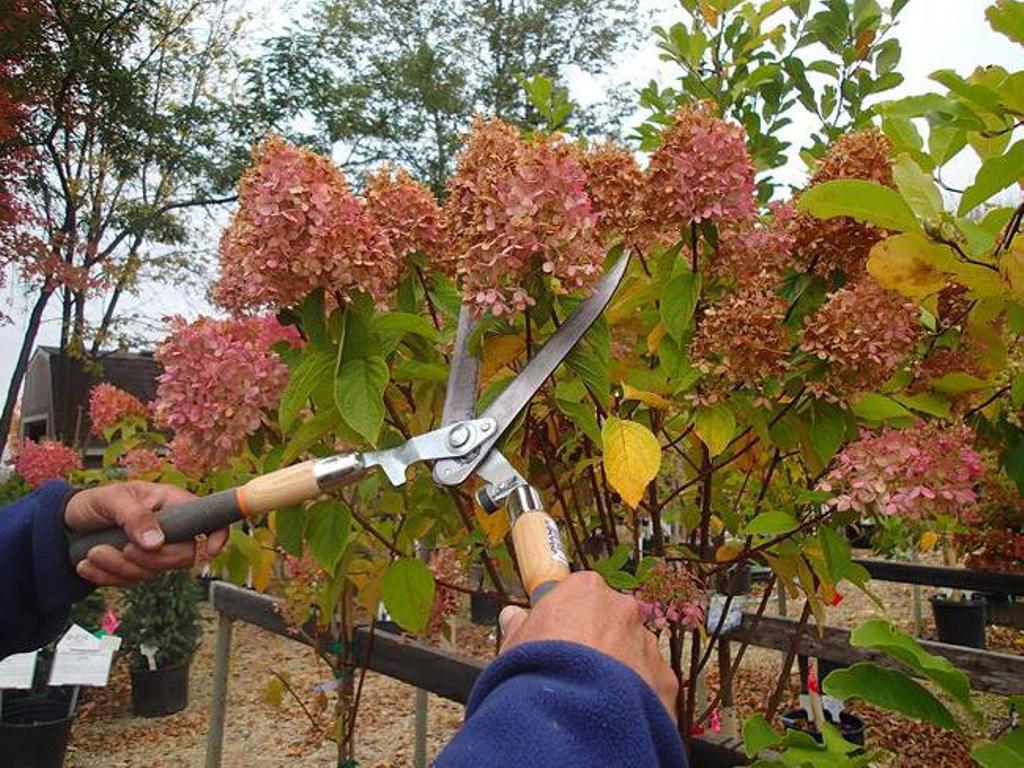 Hydrangea care in the fall and winter preparations
Hydrangea care in the fall and winter preparations How to feed hydrangea for lush flowering
How to feed hydrangea for lush flowering How to hide hydrangea in Siberia for wintering
How to hide hydrangea in Siberia for wintering